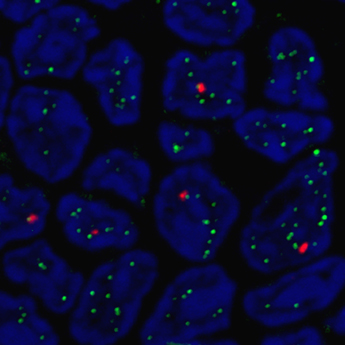
Group Members
“The structural organisation of chromatin affects the expression of genes – we study this relationship in embryonic stem (ES) cells and differentiated systems”
Our main aim is to understand the molecular and structural processes that regulate gene expression in the context of the interphase nucleus. We are investigating the relationship between genome architecture and gene expression in embryonic stem (ES) cells and differentiated systems.
Using chromatin immunoprecipitation (ChIP), we have shown that poised RNA polymerase II complexes are bound in ES cells at inactive, PRC-repressed genes that are important for early ES cell differentiation. We are currently studying their activity and regulation – and characterizing RNA polymerase II modification using genomewide ChIP mapping – through the Illumina platform. We have developed high-resolution imaging methods for the visualisation of spatial relationships within the nucleus (cryo-FISH), and aim to understand the contribution of nuclear positioning on gene expression. We are using biochemical strategies to identify regulators of RNA polymerase II function in a bid to devise genetic assays that directly test their roles in genome architecture and gene regulation.

Figure 3. Association of active genes (red) with transcription factories (green) in T cells.
